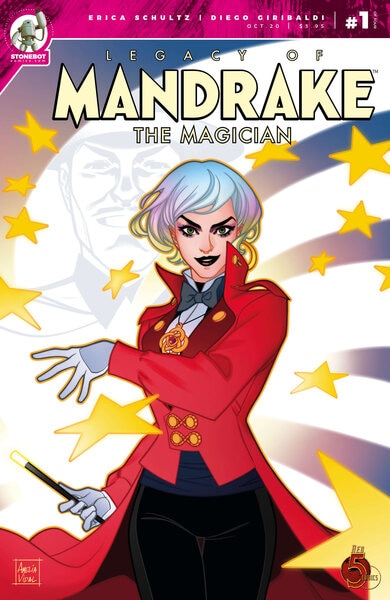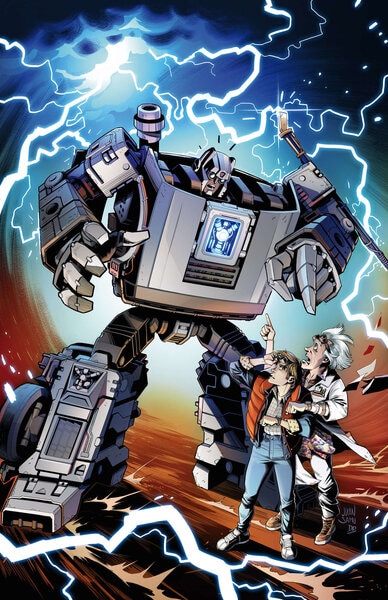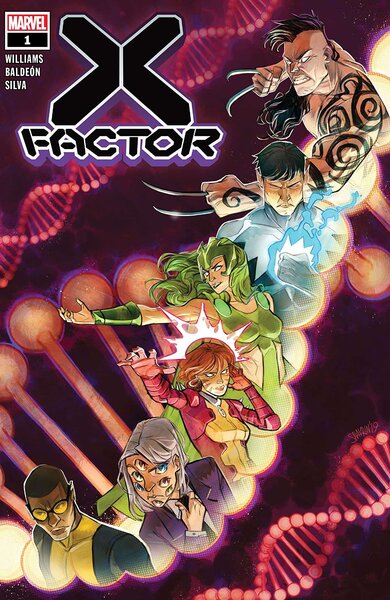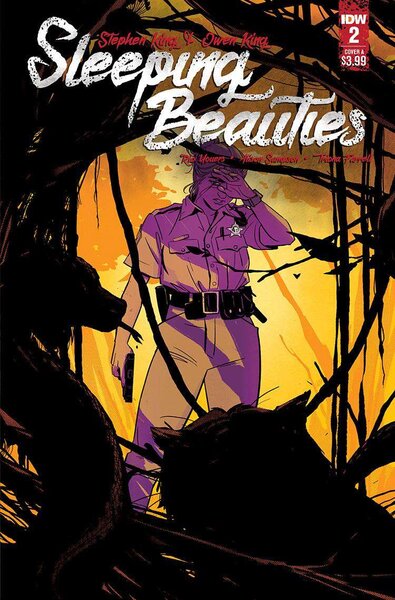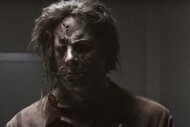Create a free profile to get unlimited access to exclusive videos, sweepstakes, and more!
Comics Wire: Making sense of all the big comics news, sneaky cool stories from Comic-Con@Home
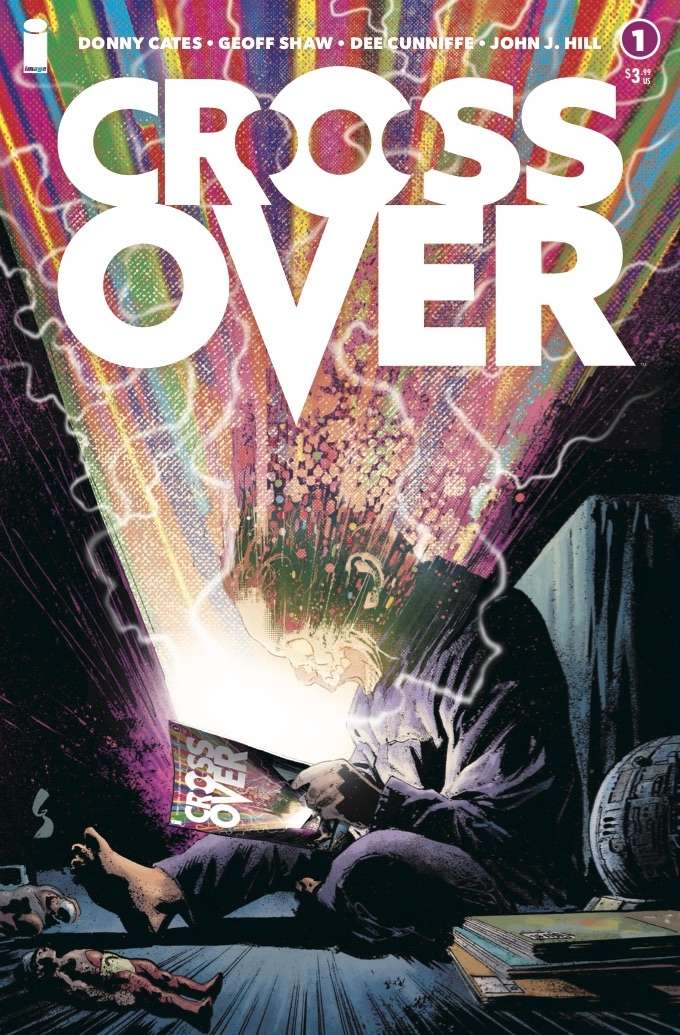
Welcome to Comics Wire, SYFY WIRE's weekly comics column that gets at the pulse of what's going on in comics right now. We've got what you need to know about huge crossovers, real-life issues facing the industry, cool first looks, the week's hot new comics, and everything in between.
Well, we are now on the other side of a version of Comic-Con that was very unusual for many, many reasons. Comic-Con@Home brought with it certain advantages, including all of us watching as many panels as we wanted in our pajamas, but it was also a noticeably muted affair compared to the dervish of news and teases we usually get this time of year.
The comics world, you must remember, was on pause for a couple of months this spring, which threw the whole publishing schedule and thus the whole promotional schedule off by quite a bit, which meant that many publishers simply weren't ready to drop as many previews of upcoming stuff as they might in another year. Still, that doesn't mean we didn't get some highlights, so let's talk about the comic book news from Comic-Con@Home that most caught my interest.
First up, there was the Image Comics Crossover panel which promised to finally provide some answers to those mysterious teasers we'd been seeing from the publisher in the weeks leading up to the con. Over the course of an hourlong panel, the creative team of Donny Cates, Geoff Shaw, Dee Cunniffe, and John J. Hill laid out their vision for a new comic that will play with the very notion of crossover events by showing us what might happen when a "fictional" superhero event gets so massive, so unstoppably epic, that it literally breaks the barriers between universes and lands in our world. Cates, who's already done some pretty ambitious work over the course of his career, called it both "the scariest" and "most exciting" story he's attempted.
“In the world of Crossover, how does the idea that the notion of fiction has now died, when every fictitious character you could ever think of is here, in our world,” Cates said. “How does that affect society? How does that affect the notion of the comic book store?…When the notion of fiction gets shattered, so does the notion of reality.”
There's a lot going on with the big ideas in this book, and we still don't know the whole story. Even in the Comic-Con panel, Cates couldn't help but tease that the book is "called Crossover for a reason," suggesting we might see more than just original characters and analogues with the serial numbers filed off popping up in this thing. However it shakes out, it's a book I can't wait to get my hands on come November. You can check out a preview over at the Image website.
One of my favorite things about comics is the way in which characters that have been around for decades can be constantly reinvented and reinterpreted when a fresh creative team gets to take a crack at them. At Comic-Con@Home, King Features announced that very thing is about to happen with one of the great pre-Superman comics heroes, Mandrake the Magician.
On Friday, King Features announced a partnership with Red 5 Comics and StoneBot Studios to publish Mandrake the Magician: Mandrake's Legacy, a new series that will focus on a new magician tied to Mandrake's history in an exciting new way. The series will be written by Erica Schultz (Forgotten Home) with art by Diego Giribaldi, Juan Pablo Massa and Moncho Bunge and covers by Amelia Vidal and Evelin Unfer. Here's the official synopsis from King Features' press release:
"Mandrake the Magician: Mandrake’s Legacy follows 17-year-old Mandy Paz, a magician-in-training who aspires to someday be just like the legendary Mandrake. She suspects her inborn magical powers must have something to do with her mysterious parentage, but so far, her mom’s lips are zipped, and she has to work out the whole magician thing with the help of her BFF, LJ. While she is learning to command her superpowers, she’s also navigating college applications, mean girls, the high school talent show, a magic mirror, a kidnapping and … monsters? Mandy’s world is about to get a whole lot weirder and way more enchanted."
The series debuts October 28, just in time for some Halloween fun.
One thing we can always count from IDW Publishing is the kind of stories that play like a more sophisticated version of a kid just smashing toys from two different media properties together, and I mean that as a very sincere compliment. Well, I'm pleased to report they're at it again. After launching a Transformers/Terminator crossover earlier this year, IDW is now about to introduce the Autobots to Marty McFly.
On Wednesday, right as Comic-Con@Home was getting underway, IDW announced Transformers/Back to the Future, a new adventure featuring time-travelling Decepticons, Hill Valley in peril, and a brand new Autobot time machine who calls itself Gigawatt. The four-issue miniseries will be written by Cavan Scott, and drawn by Juan Samu.
“When I was asked to write the official crossover comic, I could only shout ‘Great Scott’ and dive in,” Scott said in a press release. “It’s the perfect fit. Both Transformers and Back to the Future are packed with adventure, humor, and (most importantly) heart. Plus, it gave me a chance to play with multiple Transformers timelines, harkening back to some of my favorite Transformers storylines of the ‘80s, while also bringing in elements of all three Back to the Future movies. Look out for classic characters, both human and Cybertronian, and a few surprises along the way!”
Transformers/Back to the Future debuts in October, when '80s kids everywhere will rejoice over the first issue.
Those were the biggest bits of pure comics news that caught my eye, but they were far from the only things going on. There was a fantastic small press panel exploring a lot of exciting titles coming down the pike now that shipping is back on track from publishers like Red 5, Scout, Mad Cave, and more. Publishers like Humanoids, Ahoy, and Heavy Metal held panels exploring their futures and the ambitions of their creators. The panel on the Lee/Kirby working dynamic was as fascinating as I thought it was going to be. Oscar Isaac announced a graphic novel project with the great Christian Ward.
And of course, the Eisner Awards happened, though they happened under a cloud of controversy thanks to a strange voting process this year. It's hard to overlook that controversy — and eventual Eisner winners Women Write About Comics addressed it in a very direct and, I thought, courageous way — but there were certainly plenty of bright spots to the ceremony nonetheless.
The great Bitter Root won Best Continuing Series, Mariko Tamaki (a name that you'll know soon if you don't know yet) won Best Writer, the aforementioned Christian Ward won Best Painter, and so much more. But the biggest, and perhaps most emotional, moment of the night for me came when it was announced that two of my personal favorite comics people — Stan Sakai and Louise Simonson — were inducted into the Will Eisner Hall of Fame. Louise Simonson is responsible for so many of things we all love — as a writer and as an editor — at both Marvel and DC Comics, while Stan Sakai is quite possibly the best comics creator we have working today. They're both people who deserve every possible accolade, and as a fan seeing them recognized that way just warmed my heart.
Now that we've talked about all of the big stuff from the weekend, we've got a whole new week of comics to check in on. Let's talk about what caught my eye this week.
X-Factor #1: One of the great joys of the "Dawn of X" era of Marvel's X-titles is the way the reorganization of Mutant society has created all these little crevices that can be filled by great storytellers who want to fine-tune a certain subset of the age of Krakoa. This week we get the next great example of that with a new X-Factor series from writer Leah Williams and artist David Baldeon that delves into the implications of one of Dawn of X's most intriguing inventions: The Mutant resurrection system.
The series begins with a question, asked in an immediately engaging way by Williams' endlessly clever script: What happens when a Mutant dies but the resurrection team has no proof? The story begins with Northstar, then slowly adds the rest of the team until Polaris, Prodigy, Rachel Summers, Daken, and Eye-boy are all invested in answering the same question. Then, new questions emerge, as Williams fleshes out the many, many implications of this world in a way that buids new layers onto the X-franchise without ever feeling like the enormous weight of continuity is going to suddenly crush the structure. The plotting alone would be fascinating, but Williams' dialogue and tremendous sense of character bolster the series in a way that sets it apart from even other X-books. Baldeon's gorgeous art, which takes a somewhat softer and more emotive approach than a lot of superhero books might, does the rest. This is a fantastic debut to a series that just might prove to be the next bright spot in this particuar corner of the Marvel Universe.
Wonder Woman #759: Over the weekend Mariko Tamaki won an Eisner for writing comics, and now she gets to debut as the new writer of Wonder Woman. The latest issue of Diana's solo book teams Tamaki with Mister Miracle artist Mikel Janin, and like a lot of creative team debuts, the book begins with a bit of a reset for the title character. Tamaki and Janin are not out to reinvent Wonder Woman, but they are eager to tell a story that lays out their own sensibilities and concerns for the character. That's a tricky thing to do, because you risk the book getting too philosophical in a way that bogs down the action.
Wonder Woman #759 avoids those pitfalls by setting up the next major confrontation between Diana and longtime foe Maxwell Lord in an issue that gives us everything from all-out action sequences to softer moments packed with heart to an overarching narrative that lays out some intriguing new thematic directions for the character. Tamaki proves right away that she understands Diana, laying the groundwork for something great, while Janin's art both captures Diana's strength and compassion simultaneously and packs some fantastic actions sequences into a very brisk issue. I'm not always a fan of diagonal panels as a way to convey movement, but he makes it work. We couldn't ask for a better creative team to steer this book, and I'm excited for what comes next.
Pulp: Ed Brubaker and Sean Phillips are a team that's always worth watching, in part because they never seem satisfied to stay in the same groove. Sure, they write a lot of crime stories, but within that genre they just keep stretching and pushing themselves in new directions. Pulp, the team's latest graphic novel, is the latest example of that desire to push their creative gifts forward, and it's spectacular.
The story follows Max, a pulp writer trying to scrape by with his adventure stories in the 1930s even as his body starts to give out on him. Max's flirtations with mortality lead him to both reflect on his own past growing up in the American West and look ahead to what he might be able to do with the time he has left as a great evil begins to sweep over the world. The plot means that Brubaker can play in several genres at once, including somehow merging a Western and a noir conspiracy thriller into one book. It might be too much for another writer, but Brubaker makes it look easy. There's an efficiency to the way he and Phillips build these stories, a sense that there's not a panel wasted, and Pulp proves they haven't lost a step in that regard. On the contrary, Phillips' incredible art -- featuring gorgeous colors by Jacob Phillips that pop particularly in the flashbacks -- proves that they're only getting better. I love the Western/noir hybrid here, but these vistas are so amazing that I want an all-out Western from them soon.
Sleeping Beauties #2: Adapting a novel into a comic rather than a film gives you certain advantage, namely that it's easier to brush in context and color with a thought bubble or a caption. Of course, push that instinct too far, and you run into the problem of crowding out what makes a comic a comic with too much prose. This particular adaptation is often a fine line, in other words, and so far IDW's Sleeping Beauties series is nailing it.
The 10-issue comic from writer Rio Youers and artist Alison Sampson is an adaptation of the Stephen and Owen King novel of the same name, about a mysterious sleeping sickness that's sweeping the world and enveloping slumbering women in sticky, web-like cocoons. In the midst of it all, as the sickness sweeps a small town, a strange woman named Eve is walking among humanity, spreading chaos as the world comes to grips with the disease.
There's a lot to work with there, and Youers' script is both eager and able to embrace all of it, digging deep into the inherent metaphorical oomph of the story and building out the themes in a way that, so far, is beautifully paced and never overwhelming. The real star for me, though, is Sampson, whose art somehow captures both the dreamlike strangeness of the story and the all-out horror of it simultaneously. There's just enough abstraction to it that it truly feels like we might be reading a deranged fairy tale, but there's also a tactile quality that suggest we could step into this world and recognize it. Get on board this series now so you can keep up with the rest of it.
Rogue Planet #3: I like stories, especially horror stories, that seem to say right up front "OK, yes, this looks familiar, but just give us a few minutes and we'll show you something new," and I was intrigued to see if Rogue Planet could pull that trick off smoothly. The setup — a salvage ship lands on a rogue planet looking to hit paydirt and find something horrifying instead — is recognizable enough to fans of things like Alien and other assorted classic sci-fi conceits, which is reason enough to start this ride. Then the end of the first issue hits, and things are never the same. Rogue Planet doesn't just wholly become its own thing. It full-on assaults you with glorious sci-fi horror until you're almost ready to surrender.
Writer Cullen Bunn and artist Andy MacDonald know exactly what kind of monstrously fun spooky sci-fi tale they want to tell, and the result is a swagger running through Rogue Planet that it makes it alarmingly (in a good way) easy for them to introduced new monsters every single issue. The book just keeps pouring on the invention, twisting the narrative with speed of a top-notch genre thriller while layering in loads of creature feature joy along the way. And through it all -- through Bunn's delightfully unhinged scripting and MacDonald's pitch perfect art -- there's a sense of glee in the book that helps drive it. It's a space horror romp that keeps promising bigger things and somehow keeps delivering them.
And that's it for Comics Wire this week. Until next time, remember what John Custer told his son Jesse in the pages of Preacher:
"You gotta be one of the good guys, son: 'Cause there's way too many of the bad."

